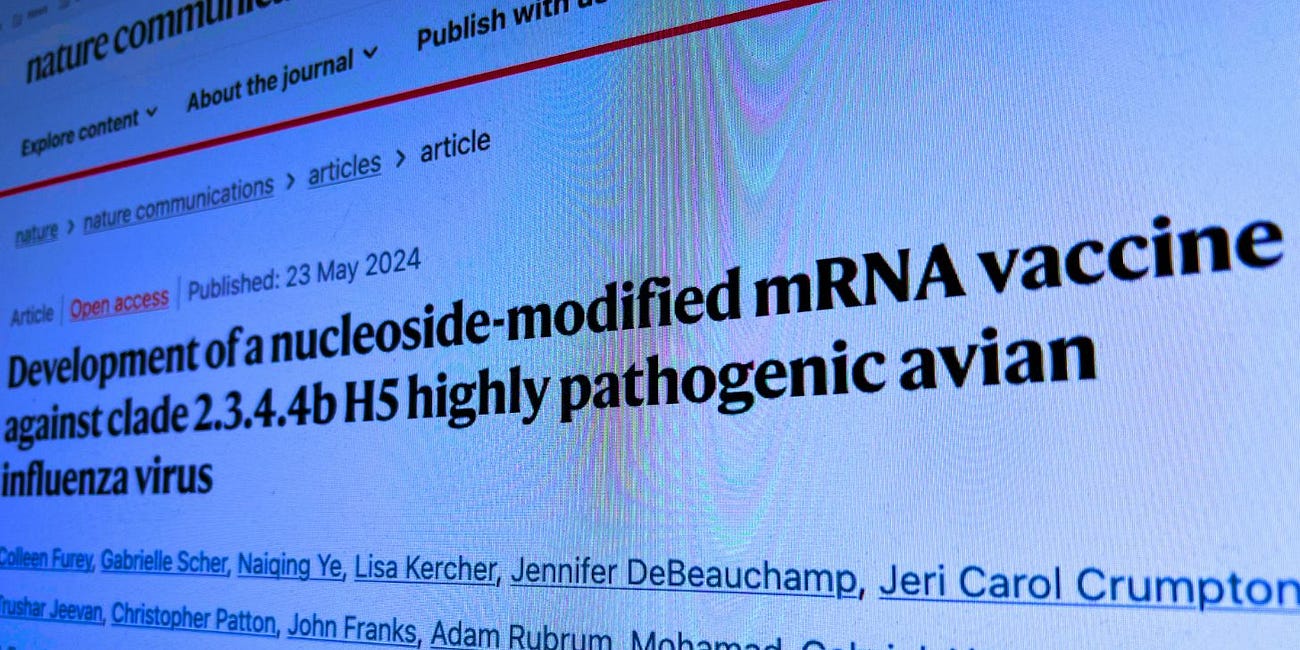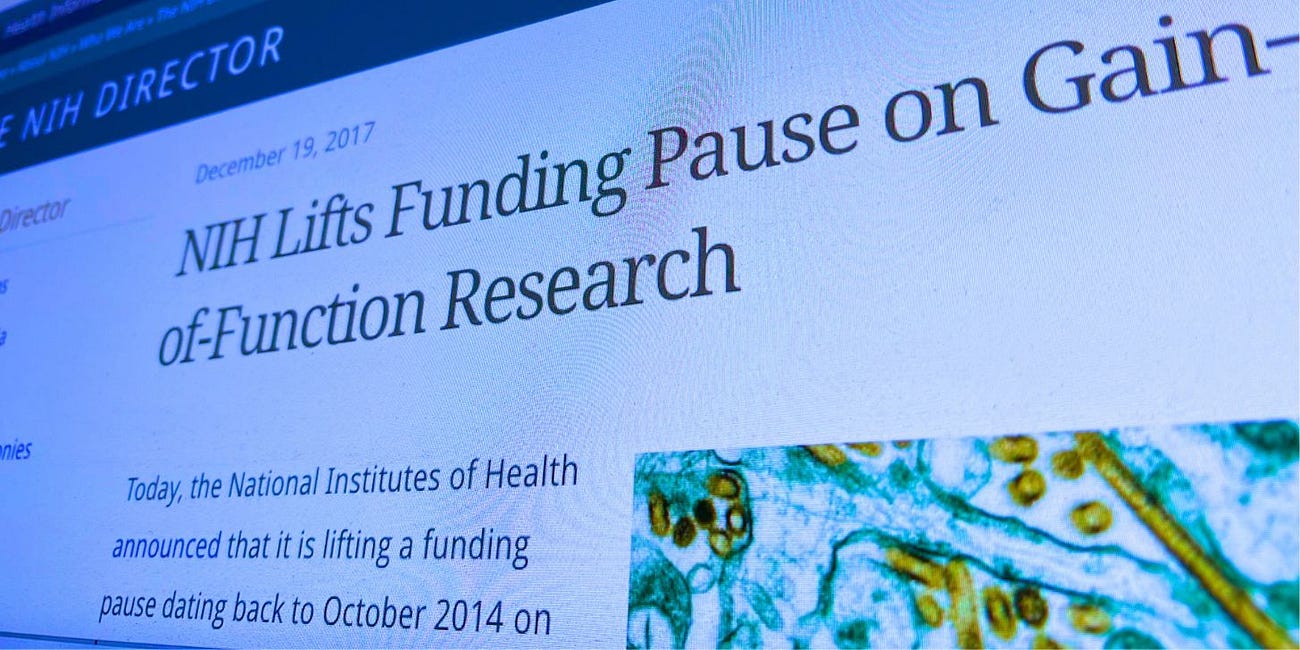PCR Test Now Being Used to Detect Bird Flu Is 97% Unreliable: Oxford Academic Journal 'Clinical Infectious Diseases'
Will the highly inaccurate test method be used to justify bird flu pandemic policy and mandates as it was during COVID?
A September 2020 publication in Clinical Infectious Diseases confirms that the test method known as ‘reverse-transcription polymerase chain reaction’ (RT-PCR), currently being used to detect the presence of the bird flu virus, is accurate less than 3% of the time.
Follow Jon Fleetwood on Instagram @realjonfleetwood / Twitter @JonMFleetwood
The journal publication has resurfaced as the U.S. and Europe begin taking steps to acquire or manufacture H5N1 bird flu vaccines as the disease threatens another pandemic.
Moreover, the U.S. Department of Agriculture (USDA) recently claimed bird flu virus particles were found in tissue samples taken from one dairy cow sent to slaughter at a U.S. meat processing plant.
However, the USDA’s testing for bird flu relies on the PCR method, which is inaccurate 97% of the time.
“The agency said it collected tissue samples at slaughter facilities from dairy cattle that were condemned for systemic diseases and then analyzed them using PCR testing,” Reuters reported Friday. “The testing does not differentiate between live virus or fragments, USDA said.”
PCR tests are said to detect viral genetic material by repeatedly amplifying and doubling the material being analyzed through cycles of heating and cooling.
Most American and European labs set this ‘cycle threshold’ (Ct) to 35–40 cycles.
But the 2020 Clinical Infectious Diseases publication discovered that as Ct values increase, the percentage of positive cultures decreased significantly, with less than 3% being positive at Ct 35.
Researchers tested 179,151 patients for COVID, of whom PCR results indicated 13,161 (7.3%) were positive.
Nasopharyngeal samples from some of these patients were collected from the uppermost part of the throat, behind the nose, known as the nasopharynx.
These samples—which PCR testing indicated were positive for COVID—were then cultured, a process that allows a virus to infect and replicate in cells in a culture dish.
The culture process was used to verify or deny the PCR test results.
The cells were incubated, allowing time for the virus to infect the cells and replicate, indicating whether or not the virus was in fact present in the samples.
Significantly, the study affirms that “<3%” of these cultures were actually positive for the virus.
Follow Jon Fleetwood on Instagram @realjonfleetwood / Twitter @JonMFleetwood
The study reads:
At the beginning of the outbreak, we correlated Ct values obtained using our PCR technique based on amplification of the E gene and the results of the culture. Since the beginning of the pandemic, we have performed 250 566 SARS-CoV-2 RT-PCR for 179 151 patients, of whom 13 161 (7.3%) tested positive. Up to the end of May, 3790 of these samples, reported as positive on nasopharyngeal samples, were inoculated and managed for culture as previously described. Of these 3790 inoculated samples, 1941 SARS-CoV-2 isolates could be obtained after the first inoculation or up to 2 blind subcultures. The correlation between the scanner values and the positivity of the culture allows us to observe that the image obtained with 10 times more isolates than in our preliminary work (1941 vs 129) does not change significantly. It can be observed that at Ct = 25, up to 70% of patients remain positive in culture and that at Ct = 30 this value drops to 20%. At Ct = 35, the value we used to report a positive result for PCR, <3% of cultures are positive.
Clinical Infectious Diseases (CID) is a leading peer-reviewed medical journal published biweekly by Oxford University Press on behalf of the Infectious Diseases Society of America (IDSA).
Shortly after these findings were published, they were used by Portuguese judges who upheld a decision from a lower court that found the forced quarantine of four German holidaymakers to be unlawful.
The case hinged on the reliability or lack thereof of COVID-19 PCR tests, a report from the time explains.
The report, written by London-based Irish science journalist Peter Andrews, reads:
The verdict, delivered on November 11, followed an appeal against a writ of habeas corpus filed by four Germans against the Azores Regional Health Authority. This body had been appealing a ruling from a lower court which had found in favour of the tourists, who claimed that they were illegally confined to a hotel without their consent. The tourists were ordered to stay in the hotel over the summer after one of them tested positive for coronavirus in a PCR test - the other three were labelled close contacts and therefore made to quarantine as well.
…
[The judges] were also scathing about the reliability of the PCR (polymerase chain reaction) test, the most commonly used check for Covid.
The conclusion of their 34-page ruling included the following: “In view of current scientific evidence, this test shows itself to be unable to determine beyond reasonable doubt that such positivity corresponds, in fact, to the infection of a person by the SARS-CoV-2 virus.”
In the eyes of this court, then, a positive test does not correspond to a Covid case. The two most important reasons for this, said the judges, are that, “the test’s reliability depends on the number of cycles used’’ and that “the test’s reliability depends on the viral load present.’’ In other words, there are simply too many unknowns surrounding PCR testing.
…
Earlier this year, data from three US states – New York, Nevada and Massachusetts – showed that when the amount of the virus found in a person was taken into account, up to 90 percent of people who tested positive could actually have been negative, as they may have been carrying only tiny amounts of the virus.
The Portuguese judges cited a study conducted by “some of the leading European and world specialists,” which was published by Oxford Academic at the end of September. It showed that if someone tested positive for Covid at a cycle threshold of 35 or higher, the chances of that person actually being infected is less than three percent, and that “the probability of… receiving a false positive is 97% or higher.”
While the judges in this case admitted that the cycle threshold used in Portuguese labs was unknown, they took this as further proof that the detention of the tourists was unlawful. The implication was that the results could not be trusted. Because of this uncertainty, they stated that there was “no way this court would ever be able to determine” whether the tourist who tested positive was indeed a carrier of the virus, or whether the others had been exposed to it.
The PCR test’s demonstrated unreliability raises questions about its use amid a potentially incoming bird flu pandemic.
PCR results played a crucial role in justifying various COVID policies and mandates during the pandemic, as the method was relied upon to track COVID case numbers.
If the PCR test method is as inaccurate as the Clinical Infectious Diseases study shows, questions are raised about whether the method should be used during the coming bird flu pandemic.
Follow Jon Fleetwood on Instagram @realjonfleetwood / Twitter @JonMFleetwood
USDA Developed mRNA Bird Flu Vaccine Against 2.3.4.4b H5N1 As It Made That Virus More Infectious and Deadly with Gain-of-Function—Now the Same Virus Subtype Is Causing the Next Pandemic
A Thursday publication in the peer-reviewed journal Nature confirms the U.S. Department of Agriculture (USDA) has been developing an mRNA vaccine for the very same influenza virus, subtype, and clade that is reportedly causing the coming bird flu pandemic: 2.3.4.4b H5N1.
NIH's 2017 Reversal of Gain-of-Function Research Ban Only Applied to 2 Virus Families: Coronavirus and Influenza—One Caused the 2019 COVID Pandemic, the Other Is About to Cause a Bird Flu Pandemic
The only two virus families the U.S. National Institutes of Health (NIH) funds dangerous gain-of-function (GOF) experiments on happen to include the virus that caused the last pandemic and the virus that will cause the next pandemic.
U.S. 'Relaxes' Biolab Regulations for Handling Deadly Pathogens Despite Ex-CDC Chief's Bird Flu Pandemic Warning
The United States has “temporarily relaxed strict guidelines” for handling, storing, and transporting dangerous H5N1 bird flu samples, following a request from the Association of Public Health Laboratories (APHL), a U.S. government-funded nonprofit membership organization.
U.S. Gov't Is Making a Vaccine for a Virus It Also Happens to Be Making More Deadly: Bird Flu
The U.S. Department of Agriculture (USDA) is spending $1 million of American taxpayer money to fund gain-of-function experiments on dangerous bird flu (avian influenza) viruses in collaboration with Chinese scientists, according to a new report.
As Media Hypes Bird Flu-Infected Cows, Bird Flu Vaccine Discovered to Contain Neurotoxin Mercury, Dog DNA, Cancer-Causing Chemicals: FDA Package Insert
The U.S. Department of Agriculture (USDA), Food and Drug Administration (FDA), and Centers for Disease Control and Prevention (CDC) are claiming rampant bird flu (H5N1 avian influenza) has spread to dairy cattle across several states.
Biden Signs Into Law Spending Bill That Could Apply Over $1 Billion to Future Bird Flu Pandemic: Doctor Says 'Bioweapon Event' Could Be Imminent
Summary: Biden signs $1.2 trillion spending package Legislation allocates $708,272,000 for emerging and zoonotic infectious diseases Additional $315,000,000 earmarked for flu pandemic preparation, includes vaccine production Congress readies over a billion dollars for future animal-to-human infectious diseases, like bird flu (influenza)
8 Studies Support Ivermectin's Effectiveness Against Influenza Amid Bird Flu Pandemic Worries
As the H5N1 influenza A virus (IAV) infects birds and mammals, including humans, across the world, health experts are warning a bird flu pandemic could be “100 times worse” than COVID-19.
7 Studies Confirm Antiviral 'Xofluza' Is 'Drug of Choice' for Bird Flu, as USDA Tests Ground Beef for Virus
The U.S. Department of Agriculture (USDA) will begin testing ground beef for H5N1 bird flu (influenza) particles, as the virus has reportedly been found in nearly three dozen dairy herds across nine states.











The PCR is not 97% unreliable. It is 100% fraudulent. According to the inventor, Dr. Kary Mullis, it has NEVER been able to diagnose infection, and was created to simply do DNA sequencing. DNA sequencing can show if you have ever been exposed to an organism, but you have to have the genetic code of that organism. Considering that all of the studies claiming isolation, were using a DNA soup method that is the opposite of isolation (purification), and that many of the Journal studies explain that their virus is "in silica," aka a computer-generated model, no one has coded the genome, so how are they testing for a virus that has never been isolated, its genome never coded, using a "test" that cannot diagnose infection, with a tool that requires the genetic code to show if you have ever even been exposed to the fake virus? IT is nanotechnology that is contagious, and they put it into the food supply, drug supply, it's on the PCR swabs, it's in the surgical masks, the tap water, bottled drinks, and is being sprayed all over the planet via chemtrail SMART dust. Yes, the PCR being used to diagnose bird flu is equally fraudulent, as it was being used to fraudulently diagnoses HIV, which is another non-virus depopulation scheme. Check out my recent article with a video that will explain what isolation is versus the method these psychopaths are using. We have to wisen up to the see through the psyops, and all of the PCR testing is a big piece of the health and plandemic psyops. https://sarahlawtonrn.substack.com/p/the-there-are-viruses-there-are-no
Sarah is correct...a total FRAUD. The answer to the question at the top of the article is: Indubitably, Invariably Yes!
I watched the first few videos of the WHO's 77th World Health Assembly. It's supposed to go until June 1st. This is where they are working to "finalize" their "Pandemic Preparedness Treaty" (they've been preparing for this for decades). It wasn't easy listening to their garbage rhetoric! I added dozens of PDF's to my library - including the one that shows Canada is one of the largest "donors". Thanks, TURDeau!
https://www.who.int/about/funding/contributors/can